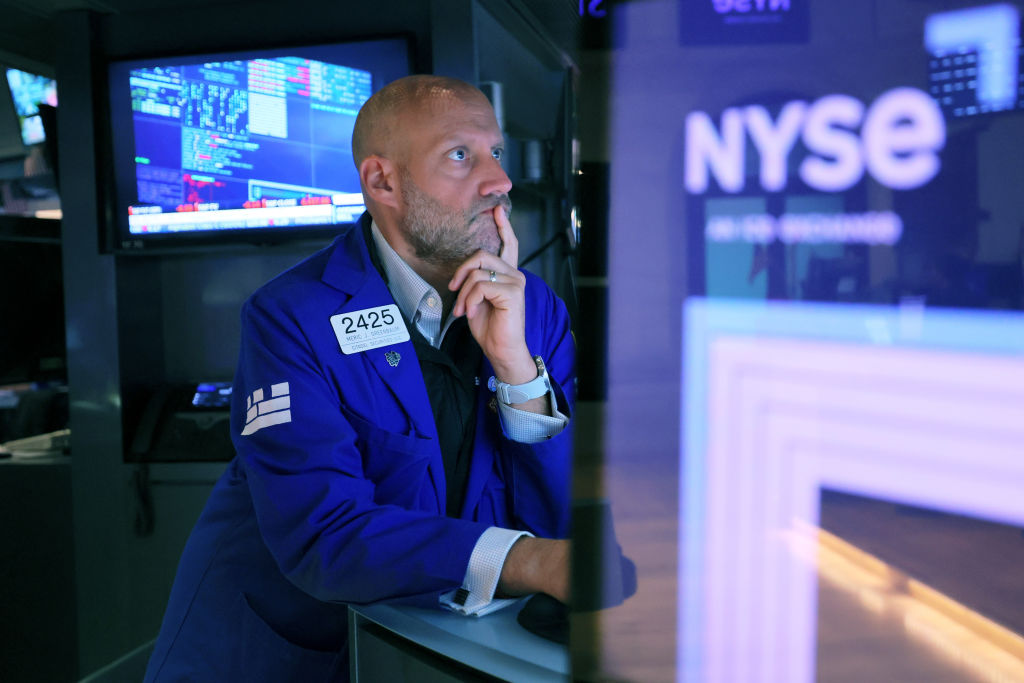Bitcoin dropped Friday morning in Asia to trade below the US$27,000 support level. Ether also retreated and lost control of the US$1,600 mark for the first time in the past week. All other top 10 non-stablecoin cryptocurrencies logged losses in the past 24 hours. Solana led the losers with a slide of over 3%. The drop in crypto prices coincided with a decline Thursday in global equity markets as investors digested hawkish U.S. Fed remarks on monetary policy. U.S. stock futures were trading flat during opening hours in Asia after all three major U.S. indexes logged losses of over 1.0% Thursday.
Cryptos drop as US bond yields soar
Bitcoin fell 2.10% in the last 24 hours to US$26,580.90 as of 07:30 a.m. in Hong Kong, according to CoinMarketCap data. The world’s largest cryptocurrency fell to US$26,389.30 on Thursday night, its lowest level in a week.
After deciding to keep interest rates unchanged in September as expected, the U.S. Federal Reserve projected one more interest rate hike by the end of 2023. While it lowered its prediction for the pace of interest rate cuts in 2024, comments from Fed members were “more hawkish” than analysts expected.
“The drop in most tokens this morning could reflect the cautious stance of investors, who are carefully digesting the implications of the Federal Reserve’s recent interest rate remarks,” said John Stefanidis, CEO of blockchain infrastructure platform Balthazar DAO.
“Additionally, the surge in 10-year U.S. Treasury yields to 16-year highs could have played a role in reshaping market dynamics,” Stefanidis added.
Following the Fed meeting Wednesday, benchmark 10-year U.S. treasury yields rose to a 16-year high of 4.49% on Thursday.
“U.S. equity and rates markets have broken some very key levels on the back of this (Fed projection), and reflexivity can take over with the bearish thesis from here,” said digital asset trading firm QCP Capital in a Thursday Telegram market update.
The drop in equity markets and rising treasury yields “could seep into crypto markets and take BTC lower with it, albeit with a lower beta as compared to other very stretched macro markets like the NASDAQ,” said QCP Capital.
Despite macro pressures, Bitcoin can receive some support from the multiple spot Bitcoin exchange-traded fund (ETF) applications ongoing in the U.S., said Markus Thielen, head of research and strategy at digital asset service platform Matrixport.
“If the SEC approves a Bitcoin ETF, which we believe is a 70% probability over the next six months, then there could be an immediate re-pricing and Bitcoin could be +20% more expensive in an instant. Hence, it is essential to keep upside exposure to such an event,” Thielen said in an emailed comment.
Ether fell 2.35% to US$1,585.53 and was trading 2.66% lower for the week. The world’s second largest cryptocurrency fell below the US$1,600 support level for the first time since last Thursday.
All other top 10 non-stablecoin cryptocurrencies posted losses in the past 24 hours. Solana’s SOL led the losers, falling 3.73% to US$19.54. But it still posted a weekly gain of 3.35%
Meanwhile, the collapsed Tokyo-based crypto exchange Mt. Gox delayed the deadline to repay its customers from October 2023 to October 2024, according to an announcement by Mt. Gox trustees on Thursday.
Around 850,000 Bitcoins (worth about US$22.57 billion at the current price) were stolen from Mt. Gox in 2014, which was then the largest crypto exchange in the world. The crypto exchange currently holds about 142,000 Bitcoins. Analysts expect the return of the lost Bitcoin to Mt. Gox customers will exert selling pressure on the wider Bitcoin market.
“(Mt. Gox’s delay) alleviates — at least for now — a wave of selling that many traders must have been prepping for and that can now be ignored,” said Justin d’Anethan, head of Asia-Pacific business development at Belgium-based crypto market maker Keyrock.
Elsewhere, Tether Holdings, the issuer of the USDT stablecoin, expanded its USDT lending services during the latest financial quarter, less than one year after saying it would phase out the practice.
“Most investors and holders would see that as additional risk, as it means more assets will be used by third parties and, if market conditions were to turn for the worse, could pose liquidity issues,” said d’Anethan.
USDT traded at US$1.0001 as of 07:30 a.m. in Hong Kong, slightly higher than its 1:1 peg to the U.S. dollar. The valuation suggests “investors are not worried and actually prefer it to most other stablecoin options,” said d’Anethan.
The total crypto market capitalization dropped 1.67% in the past 24 hours to US$1.05 trillion, while trading volume jumped 158.64% to US$72.41 billion.
No sign of US economic slowdown; BOJ maintains monetary easing

U.S. stock futures were trading flat as of 09:30 a.m. in Hong Kong. Wall Street closed lower Thursday, the Nasdaq Composite leading the losers with a 1.82% slide. The Dow Jones Industrial Average and S&P 500 also booked losses of over 1%.
Most major Asian stock indexes were down Thursday morning. Hong Kong’s Hang Seng, Japan’s Nikkei 225 and South Korea’s Kospi all booked losses. The Kospi led the losers with a 0.92% drop, while China’s Shanghai Composite posted a marginal gain of 0.05%
The drop in equity markets followed the Federal Reserve’s hawkish tone on monetary policies at its September meeting Wednesday. Fed members projected the interest rate to reach 5.6% by the end of 2023, indicating another 25-basis-point rate hike to come within the year. The Fed also raised the projected median interest rate by the end of 2024 from 4.6% to 5.1% in a sign it intends to keep rates higher for longer.
The Fed may need to further raise the interest rate “to make sure that core inflation especially continues to come down at an appropriate pace so the committee can get back to 2% inflation in a reasonable time frame,” Former Federal Reserve Bank of St. Louis President James Bullard told Bloomberg on Thursday.
“The prospects for a soft landing are very good, but you haven’t landed until you get inflation back to 2%,” said Bullard. The U.S. core consumer price index (CPI) for August rose 4.3% year-on-year, the smallest increase in almost two years.
On the economic data front, the initial jobless claims in the U.S. dropped to 201,000 in the week ending Sept. 16. The figure is lower than the analyst expectation of 225,000 and marks the lowest level since January. The data could add to the Fed hawkishness regarding monetary policy.
“This economy is just not showing any sign of slowing down which hints that inflation will not be coming back down to target,” Christopher Rupkey, chief economist at FWDBONDS in New York, told Reuters on Friday. “The Fed was wise to keep another interest rate hike in their back pockets just in case, and it now looks like another rate hike is warranted.”
The Fed meets on Nov. 1 to make its next decision on interest rates. The CME FedWatch Tool predicts a 73.8% chance of no interest rate hike in November, up from 71.6% on Thursday. It also gives a 54.8% chance of another pause in December, up from 53.4% on Thursday.
Elsewhere, Russia issued a temporary ban on diesel and gasoline exports on Thursday with an unspecified end date. The announcement triggered a jump in diesel prices in Europe.
“Despite this being only a temporary ban, the impact is significant as Russia remains a key diesel exporter to global markets,” Alan Gelder, vice president of refining, chemicals and oil markets at global consultancy group Wood Mackenzie Ltd., told Bloomberg on Thursday.
“The global refining system will struggle to replace those lost Russian volumes at a time when global diesel inventories are already at low levels,” Gelder added.
In Japan, the country’s central bank announced its own decision on interest rates Friday. The Bank of Japan will maintain its ultra loose monetary policy. That includes a short-term interest rate target of -0.1% and an effective cap of 1.0% on 10-year bond yields.
(Updates with equity section, Stefanidis’ comment)





